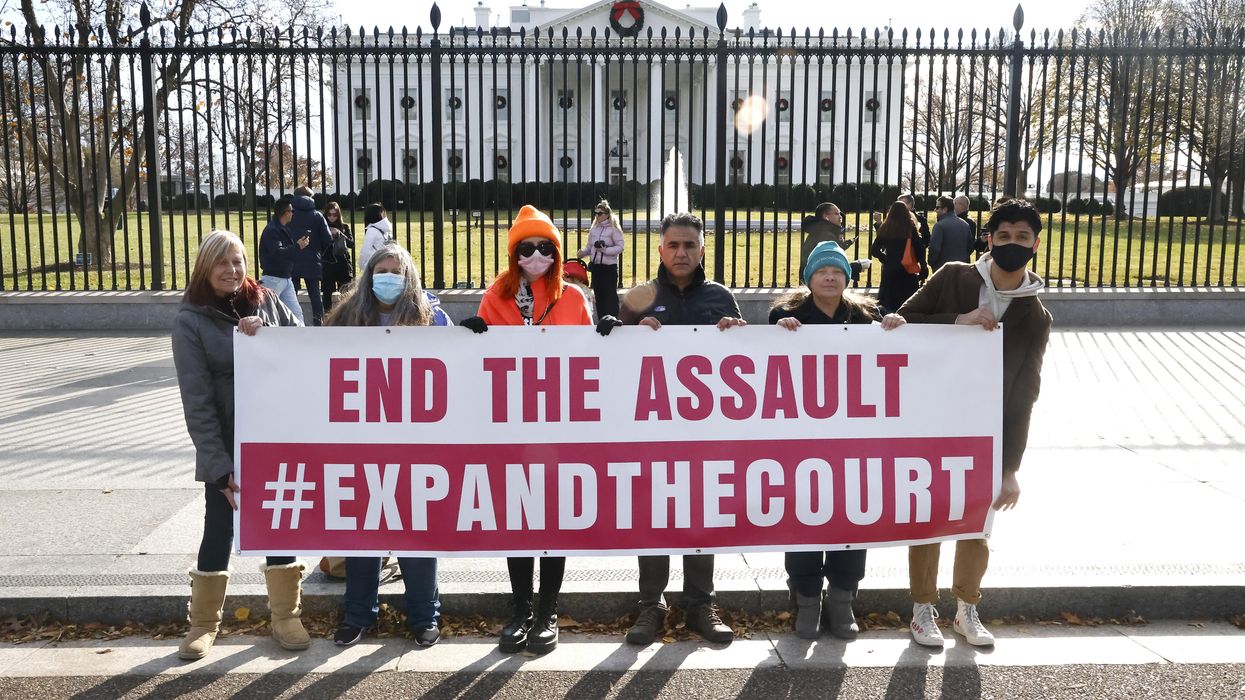Sarkar is deputy communications director and press secretary for Stand Up America.
With the leak of Justice Samuel Alito’s draft opinion overturning Roe v. Wade generating shockwaves across the country, Supreme Court expansion is once again emerging as a serious proposal in response to the extreme partisanship overtaking our nation’s highest court. Throughout our nation’s history, federal lawmakers have expanded and reduced the size of the Supreme Court several times to ensure a bench that provides prudent and fair judicial review.
The history of court expansion demonstrates that not only has the court’s size changed many times — changes to the number of seats on the bench are the logical outcome of the Framers’ intent for the Supreme Court.
While the Framers of our Constitution established the Supreme Court as the highest judicial body in the land, they left the particulars of the court for Congress to decide, including the size of the bench, the scope of the court’s jurisdiction, and the length of justices’ tenure. In the early days of our nation, the very first Congress passed the Judiciary Act of 1789 establishing a Supreme Court of six justices. Since then, the size of the court has fluctuated.
It reached 10 justices during the Civil War, and Congress attempted to shrink the bench to five after the election of 1800 (although it reversed that change before it could go into effect). Some experts contend that the court’s wartime expansion was intended to help President Abraham Lincoln deliver a Union victory and bring an end to slavery by appointing more anti-slavery Republicans to the bench.
Expanding the Supreme Court to advance a political agenda or protect our fundamental rights is neither new nor nefarious — these politically informed changes to the size of the bench are inherent to the Framers’ delegation of the court’s design to Congress. As the Supreme Court’s conservative supermajority threatens to overturn our long-held constitutional right to an abortion, it is ever more the moral and constitutional imperative of Congress to check the court when Americans' fundamental rights are at stake.
Today, progressive activists are leading the charge to rebalance the undemocratically appointed conservativate supermajority and restore public trust in our nation’s highest court. Like most laws, one adding justices to the bench requires a majority vote in each chamber. But in the era of rampant abuse of the filibuster, the Senate would need a supermajority of 60 votes on a procedural matter just to get to a vote on final passage and send it to President Biden’s desk. Unless Democrats end the Senate filibuster by November and pass the Judiciary Act, the odds of rebalancing the court’s ideological scales in the near future are slim.
But not impossible.
The most serious current congressional proposal for court expansion would add four seats to the bench. The rationale behind that number? Doing so would bring the size of the bench into alignment with the number of circuit courts in our country’s legal system, which has been the case throughout most of our history. The Supreme Court’s upcoming decisions on life-or-death issues — like the right to an abortion and the right to be safe from gun violence — are also likely to serve as a movement catalyst for a growing number of Americans. The outrage people expressed over the court’s intent to strike down Roe v. Wade is just the beginning.
Court expansion aims to restore ideological balance on the bench that Donald Trump and Mitch McConnell stacked with three right-wing appointments: Neil Gorsuch, Brett Kavanaugh and Amy Coney Barrett. This, in tandem with McConnell’s refusal to allow outgoing Barack Obama to appoint Merrick Garland to the bench but permitting Trump to appoint Barrett in the final days of his presidency, justifiably outraged Democrats who were not only denied their party’s rightful choice in Obama’s second term, but sidelined while Trump got his choice under an entirely different set of rules.
Because of Trump’s flurry of appointments to the Supreme Court, there is now an overwhelming 6-3 conservative supermajority — one that fails to uphold the constitutional rights of the American people. No wonder the current Supreme Court hit an historically low approval rating of 40 percent after its shadow docket decision to allow a controversial Texas abortion law to stand despite national outrage against the bill’s clearly unconstitutional restriction on reproductive rights. What’s more, in a poll conducted after that, more than half of registered voters expressed some level of support for court expansion to rebalance the bench away from an extreme political agenda and back toward upholding the Constitution.
If the conservative supermajority accurately represented the American public’s values and priorities, expansion might not be needed. But the bench is radically out of step with the majority of Americans and its constitutional purpose of defending the rights of all people, especially minorities — as was the case during Lincoln’s wartime court expansion effort. Today, the Supreme Court iis not just protecting the Trumpian minority its majority is politically beholden to; now, the court is actually stripping guaranteed rights and freedoms from the majority of Americans who want those rights and freedoms — bodily autonomy, the right to breathe clean air, to not be terrified of gun violence at school or work — that have long been taken for granted.
To restore the legitimacy of and public confidence in the Supreme Court, Congress must leverage its power to check the court’s conservative supermajority and its partisan agenda by adding justices who will fairly apply legal precedent and bring an end to the rampaging radicalism that has hijacked our nation’s highest court. In the end, this is not an argument for Democrats to overtake the Court — it is a resounding demand from the majority of Americans to save our court from the ongoing right-wing takeover and ensure that upholding the Constitution remains the Supreme Court’s sole objective.




















